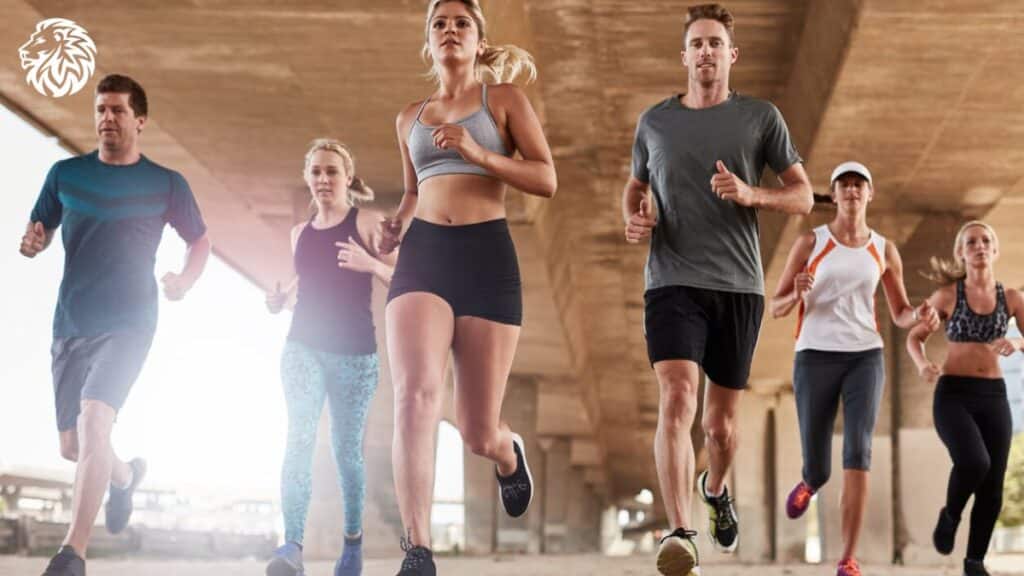Belly fat, more scientifically known as visceral fat, resides deep within the abdomen, cushioning the spaces between our organs. While some amount of belly fat can be protective, an excess can pose significant health risks. High volumes of this fat are linked to several chronic conditions including type 2 diabetes, heart diseases, and even certain cancers. Beyond the physiological concerns, excessive belly fat can also lead to diminished self-esteem and body image issues for many individuals.
It’s a widespread belief that spot reduction – the idea of losing fat from a specific body part by exercising that part alone – is effective. Many are led to believe that activities like sit-ups or crunches can melt away belly fat. However, science has consistently debunked the myth of spot reduction. The body loses fat as a whole, not from specific areas in isolation.
Moreover, diet fads and ‘miracle’ supplements promising a flat belly overnight have clouded genuine advice, making it challenging for people to discern effective strategies from gimmicks. This confusion further underscores the need to understand scientifically-backed and sustainable methods for fat reduction.
Amidst the ocean of options, running stands out as one of the most effective exercises for overall fat reduction, including that pesky belly fat. It’s an aerobic exercise that not only boosts the heart rate but also burns calories, leading to a systemic reduction in body fat. With consistent running, combined with a balanced diet, individuals can witness a noticeable reduction in belly fat. In the subsequent sections, we’ll dive deep into the mechanics of how running specifically aids in burning belly fat, supported by research and scientific explanations.
The Physiology of Running and Fat Burn

Basic Explanation of How the Body Burns Calories
At its core, our body is like an engine that constantly burns fuel, even when at rest. This fuel primarily comes in the form of calories from the food we consume. The process of burning these calories to produce energy is called metabolism. The rate at which we burn these calories is termed the metabolic rate, which varies from person to person based on factors such as age, gender, weight, and genetics.
When we engage in physical activities, our body’s demand for energy increases, leading to a higher consumption of calories. This can come from readily available sources in our bloodstream or from stored forms, such as glycogen in our muscles or fat reserves throughout the body. Fat is essentially the body’s way of storing excess calories for future use. When the body experiences a caloric deficit, either through diet, exercise, or both, it taps into these fat reserves to meet its energy demands.
Importance of Aerobic Exercises and How Running Fits into This Category
Aerobic exercises are activities that increase your breathing and heart rate, facilitating the pumping of oxygenated blood by the heart to working muscles. This type of exercise relies heavily on the body’s aerobic energy-generating process, using oxygen to produce the required energy. The primary source of fuel during sustained aerobic activities is fat, which is why these exercises are pivotal for fat loss.
Running is a quintessential aerobic exercise. When you run, large muscle groups, especially in the legs and core, work intensely. This requires a significant amount of oxygen to produce energy. As the duration of the run progresses and as the readily available energy sources deplete, the body increasingly turns to its fat reserves for fuel.
Furthermore, the intensity of the run plays a role. While high-intensity sprints might burn more calories from glycogen, moderate-intensity, longer-duration runs tend to tap more into fat reserves. This is why long-distance running or jogging can be particularly effective for those targeting belly fat.
In conclusion, understanding the basic physiological principles behind calorie burning and the role of aerobic exercises like running provides clarity. This knowledge equips individuals with the confidence that their efforts on the track or the treadmill aren’t just making them sweat but are actively chipping away at those fat reserves, leading to a healthier, leaner physique.
The Three Key Ways Running Helps Burn Belly Fat

1. Increase in Metabolic Rate
Explanation of the Metabolic Rate and How it Relates to Calorie Burn
Metabolic rate, often referred to as metabolism, denotes the rate at which our bodies expend energy or burn calories. Every individual has a base metabolic rate, known as the Basal Metabolic Rate (BMR), which represents the number of calories our body requires to maintain basic bodily functions at rest. This includes processes like breathing, circulation, cell production, nutrient processing, and more. An increased metabolic rate implies that the body is burning calories at a faster rate, which can accelerate fat loss when paired with a calorie-conscious diet.
Studies Showing How Running Elevates Metabolic Rate, Leading to a Higher Calorie Burn
Research has consistently shown that running, like other forms of exercise, can elevate our metabolic rate both during the activity and for several hours afterward. A study published in the “Journal of Sports Sciences” found that individuals who engaged in aerobic exercises like running experienced a significant boost in their metabolic rate, resulting in higher calorie burns when compared to those who remained sedentary.
Moreover, the intensity of the run can also influence the magnitude of this elevation. High-intensity interval runs, characterized by short bursts of intense running followed by rest or low-intensity periods, have been found to induce a higher increase in metabolic rate compared to steady-state, moderate-intensity runs.
The Afterburn Effect and Its Role in Extended Calorie Burning After a Run
The benefits of running don’t just stop when you tie your shoelaces post-run. EPOC, commonly known as the ‘afterburn’ effect, refers to the increase in oxygen uptake and calorie expenditure after a workout. When we run, especially at higher intensities, it creates an ‘oxygen debt’ in our body. Post-exercise, our bodies work to restore physiological and metabolic factors to their baseline, which requires energy and thus burns calories.
A study in the “European Journal of Applied Physiology” demonstrated that high-intensity runs can lead to significant EPOC levels, contributing to calorie burn for up to 24 hours post-workout. This prolonged calorie-burning effect ensures that the benefits of your run extend well beyond the duration of the activity itself.
In summary, the increase in metabolic rate due to running, backed by scientific research and the subsequent afterburn effect, offer a compelling case for running as a formidable weapon against belly fat. Combined with a balanced diet and consistent training, individuals can leverage these benefits for significant fat reduction.
2. Reduction in Visceral Fat
Description of Visceral Fat and Its Dangers
Visceral fat is the fat stored deep inside our abdominal cavity, wrapping itself around essential organs like the liver, pancreas, and intestines. Unlike subcutaneous fat, which lies just beneath the skin and can be pinched, visceral fat isn’t always visible but can be much more hazardous. High levels of visceral fat are linked to insulin resistance, heart diseases, type 2 diabetes, and certain cancers. It can also produce inflammatory substances that increase the risk of chronic diseases.
How Running Specifically Targets Visceral Fat Compared to Other Types of Exercise
While many exercises can help burn calories and reduce overall body fat, running holds a particular advantage when it comes to visceral fat. Running, being an aerobic activity, is especially effective at burning this deeper, more harmful fat. The reason is that the body prefers to use fat as the primary fuel source during sustained aerobic activities. When engaged in such exercises, the body taps into these deeper fat reserves, leading to a more significant reduction in visceral fat compared to exercises that rely more on carbohydrates as fuel.
Research Linking Regular Aerobic Exercise Like Running to Reductions in Visceral Fat
Several studies have highlighted the benefits of aerobic exercises, like running, in reducing visceral fat. For instance, a study published in the “American Journal of Physiology” found that aerobic exercises significantly reduced visceral fat compared to resistance training, even when the caloric expenditure was equivalent. This underscores the unique advantage of aerobic exercises in targeting harmful belly fat.
3. Enhancement of Muscle Tone and Density
Difference Between Losing Weight and Losing Fat
Losing weight and losing fat aren’t synonymous. When individuals aim for weight loss, they might lose muscle mass, water, and fat. On the contrary, targeting fat loss specifically ensures that the body retains muscle while shedding fat, leading to a more toned appearance and healthier body composition.
How Running, Although Primarily a Cardio Exercise, Engages Core Muscles
While many view running as solely a leg workout, it engages various muscles, especially in the core. Maintaining posture, stabilizing the body, and assisting in the propulsion and motion while running requires a strong core. Over time, regular running can help tone and strengthen these core muscles, adding to the lean appearance and also aiding in the reduction of belly fat.
The Role of Increased Muscle Density in Burning More Calories, Even at Rest
Muscle tissue is metabolically active, meaning it requires energy (or burns calories) even when at rest. The more muscle mass an individual has, the higher their resting metabolic rate. By enhancing muscle tone and density, running indirectly contributes to a higher calorie burn, even outside of exercise sessions. This means that individuals with higher muscle density, resulting from consistent running and core engagement, will burn more calories throughout the day, accelerating fat loss.
Additional Benefits of Running

While the central focus of this article is on how running assists in burning belly fat, it’s essential to recognize that running offers a plethora of other benefits, further cementing its status as one of the most advantageous forms of exercise.
Improvements in Cardiovascular Health
- Heart Strength: Every time you run, your heart works harder to pump oxygen-rich blood to the working muscles. Over time, this consistent effort strengthens the heart, making it more efficient at pumping blood throughout the body.
- Blood Pressure and Cholesterol: Regular running has been linked to reductions in systolic and diastolic blood pressure, reducing the risk of hypertension. Additionally, running helps improve the balance between good (HDL) and bad (LDL) cholesterol, fostering better arterial health.
- Circulation and Reduced Risk of Heart Disease: Improved circulation ensures that every part of the body receives the oxygen and nutrients it needs. An enhanced circulatory system, coupled with a stronger heart, significantly diminishes the risk of cardiovascular diseases.
Release of Endorphins, Leading to Improved Mood and Stress Reduction
- The “Runner’s High”: Anyone who runs regularly might have experienced a euphoric sensation post-run. This is due to the release of endorphins, natural painkillers produced by the brain, leading to feelings of happiness and euphoria.
- Stress Alleviation: Running serves as an effective outlet for stress relief. The rhythmic, repetitive nature of the activity can be meditative, allowing runners to clear their minds, focus on their bodies, and distance themselves from daily worries.
- Improved Sleep and Cognitive Function: Thanks to the mood-enhancing and stress-reducing properties of running, individuals often report better sleep quality. Moreover, the increased blood flow to the brain during running can boost cognitive functions and potentially delay the onset of neurodegenerative diseases.
Enhanced Lung Capacity and Function
- Strengthened Respiratory Muscles: As you run, your respiratory muscles, including the diaphragm and intercostals, work harder. Regular running strengthens these muscles, improving the efficiency of each breath.
- Increased Lung Capacity: Over time, running can expand the volume of air the lungs can hold. An enhanced lung capacity means more oxygen can be delivered to the muscles during exercise, improving overall athletic performance.
- Improved Oxygen Efficiency: Not only does running increase the amount of oxygen your lungs can hold, but it also optimizes the way your body uses this oxygen. Better oxygen efficiency aids in more extended, more intense workouts and faster recovery times.
In wrapping up this section, it’s evident that the advantages of running extend far beyond just fat loss. Embracing running as a regular activity offers holistic health improvements, from the heart to the mind, ensuring that runners reap benefits that enrich both their physical and mental well-being.
Tips for Starting a Running Routine

Embarking on a running journey offers exciting potential for health and wellness transformation. However, starting right and adhering to a few crucial guidelines can make the difference between a sustainable routine and potential burnout or injury. Here are some pivotal tips to help beginners integrate running seamlessly into their lifestyles:
Starting Slow for Beginners to Avoid Injury
- Set Manageable Goals: If you’re new to running, start with goals that feel achievable. This could mean running for just five minutes at a time or alternating between walking and jogging. As you build stamina, you can gradually increase your running time.
- Prioritize Proper Form: Running with the right form minimizes the risk of injury and maximizes efficiency. Consider seeking advice or tutorials on proper running posture and mechanics.
- Invest in the Right Gear: A good pair of running shoes tailored to your foot type and running style can prevent many common running-related injuries. Visit specialty stores where staff can assist in finding the best fit.
Importance of Consistency and Gradually Increasing Intensity
- Establish a Routine: Choose specific days and times in the week dedicated to running, ensuring you have adequate rest days in between.
- Listen to Your Body: It’s essential to strike a balance between pushing yourself and knowing when to take a break. If you feel pain (not to be confused with mild discomfort or fatigue), it’s a sign you should rest and recover.
- Increase Gradually: The 10% rule is a general guideline, suggesting that you should not increase your running distance or time by more than 10% from one week to the next. This approach allows your body to adapt without being overwhelmed.
Combining Running with a Balanced Diet for Maximum Results
- Fuel Properly: Eating a balanced meal 1-2 hours before a run provides the energy needed for your workout. Post-run, consume protein and carbs to aid in muscle recovery.
- Stay Hydrated: Drinking enough water before, during, and after your run ensures optimal performance and recovery.
- Avoid Overcompensation: While it’s essential to refuel post-run, be mindful not to consume more calories than you’ve burned, especially if weight or fat loss is a goal.
Considering Interval Running or HIIT to Increase Belly Fat Burn
- Understand the Basics: High-Intensity Interval Training (HIIT) involves short, intense bursts of running followed by rest or low-intensity periods. This method can be more effective in burning calories in a shorter time frame.
- Incorporate Intervals Gradually: If you’re new to HIIT, start with one session per week, allowing your body to adjust to the intensity.
- Benefits of Interval Running: Apart from burning more calories, interval training can also improve your running speed and endurance, making your regular runs more efficient.
Integrating running into your routine is an exciting journey with numerous benefits. By starting slow, being consistent, fueling right, and exploring varied running techniques, you set the stage for a healthier, fitter version of yourself.
Common Misconceptions

Running, like many forms of exercise, has its share of misconceptions that can influence expectations and outcomes. Addressing these myths ensures a better understanding and more realistic approach to the sport.
Addressing the Myth that Spot Reduction is Possible
- The Myth: Many believe that by working out a particular part of the body, they can shed fat specifically from that area. This misconception often manifests in the form of exercises targeting belly fat, arm fat, or thigh fat.
- The Reality: Fat loss occurs uniformly throughout the body based on one’s genetics, metabolism, and overall caloric burn versus intake. While running can help reduce overall body fat, it doesn’t specifically target belly fat over other areas.
- The Takeaway: It’s essential to approach running (or any exercise) with the understanding that it will contribute to overall fat loss. For more defined results in specific areas, combine cardio with strength training to sculpt and tone muscles underneath the fat layer.
The Role of Genetics in Fat Storage and the Importance of Holistic Health
- Genetic Influence: Genetics play a significant role in determining where individuals store and shed fat. Some might find it easier to lose belly fat, while others notice changes first in their limbs.
- Beyond Aesthetics: While many turn to running for aesthetic goals, it’s crucial to recognize the comprehensive health benefits it offers. From cardiovascular health to mental well-being, running provides advantages that transcend physical appearance.
- Holistic Approach: Understanding one’s genetic predisposition can aid in setting realistic expectations. However, it’s vital to focus on the bigger picture: holistic health and well-being.
Running Alone vs. a Combination of Exercise Modalities
- The Myth: Some believe that running alone is sufficient for comprehensive fitness or that it’s the best mode of exercise for all fitness goals.
- The Reality: While running offers extensive benefits, a well-rounded fitness routine often incorporates multiple exercise modalities. Strength training, flexibility exercises, and balance workouts complement the benefits of running, ensuring all-round fitness.
- The Takeaway: To achieve diverse fitness goals, from muscle building to flexibility enhancement, consider incorporating various forms of exercise into your routine. Combining running with activities like weightlifting, yoga, or pilates can offer more comprehensive health benefits and reduce the risk of overuse injuries.
Dispelling common misconceptions associated with running ensures that individuals approach the sport with informed expectations. Recognizing the broader scope of health, the influence of genetics, and the value of varied exercise can pave the way for a more effective and fulfilling running journey.
Conclusion
As we’ve journeyed through the multifaceted world of running and its undeniable benefits in targeting belly fat, we’ve unearthed a trove of insights. Beyond just a simple cardio exercise, running emerges as a powerhouse activity with profound effects on metabolism, visceral fat reduction, and muscle tone enhancement. Each step taken on the track, treadmill, or trail not only contributes to a leaner physique but also fortifies the heart, uplifts the spirit, and sharpens the mind.
For readers who’ve been on the fence about incorporating running into their lifestyles, consider this an invitation to embrace a practice that has transformed countless lives. Whether you’re a seasoned athlete or someone who’s just starting, the path of running is inclusive, welcoming all to experience its myriad benefits.
However, as with any transformative journey, the keys to success lie in consistency and patience. The initial days might present challenges, but each run takes you a step closer to your goals. Remember, it’s not about how fast or how far you go, but the commitment to showing up, time and again.
In conclusion, as we lace up our shoes and set out on our respective running journeys, let’s remind ourselves of the broader tapestry of health and well-being. Running is more than just a means to an end; it’s a celebration of the body’s potential, the resilience of the human spirit, and the joy of movement. Happy running!
References and Further Reading
- ASICS. (n.d.). How to lose belly fat by running. Retrieved from https://www.asics.com/gb/en-gb/running-advice/how-to-lose-belly-fat-by-running/
- Verywell Fit. (n.d.). Does Running Help Lose Belly Fat? Retrieved from https://www.verywellfit.com/does-running-help-lose-belly-fat-2911106
- Marathon Handbook. (n.d.). How To Use Running To Burn Belly Fat. Retrieved from https://marathonhandbook.com/burn-belly-fat/
- Runner’s World. (n.d.). Does Running Burn Fat? Retrieved from https://www.runnersworld.com/training/a46052763/does-running-burn-fat/







